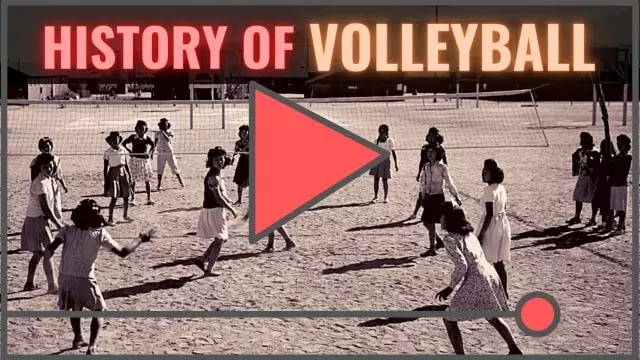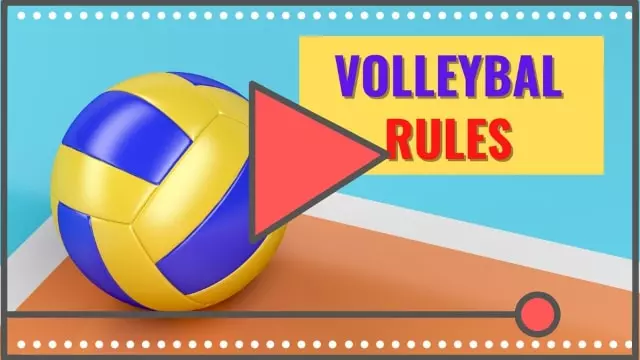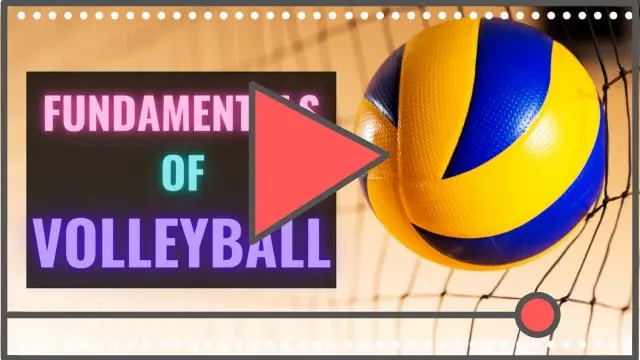Volleyball: History, Rules and Fundamentals
Volleyball History, Rules and Fundamentals: The History of Volleyball in the Worlds, Summary of Volleyball Rules and Volleyball Fundamentals.
The History of Volleyball
The history of Volleyball began in Massachusetts, USA, in 1895. Its inventor was William G. Morgan, professor of physical education.
The original name of Volleyball
The original name of Volleyball was “Mintonette”, but the name Volleyball was soon adopted.
The Net in the History of Volleyball
William Morgan got his inspiration from Tennis regarding the idea of a net sport. However, with the net positioned higher than the Tennis net.
History of the volleyball ball
The volleyball had to be somewhat bigger than a tennis ball but lighter than a basketball.
A light leather ball that could be easily thrown over the net was then created.
History of the volleyball rules
In 1912, the number of players in a volleyball team was six, which is the same as the current number.
The rotation system of the servers was also implemented concurrently.
Volleyball Scoring System
In 1916, the scoring system changed to a format that resembles today’s scoring system.
The maximum number of points changed from 21 to 15 points and the Sets were first introduced.
The winner was determined as the best of three, meaning that two sets were required in order to win a match.
Volleyball reaches Europe
In 1915, volleyball reached the french beaches brought by American soldiers who fought in the First World War.
Volleyball spread especially through Eastern Europe where the indoor games are popular due to the very cold climate.
Limit on the number of Hits and Blocking rules
In 1920, there was a great modification in the rules of Volleyball. It was established that each team was allowed to touch the ball a maximum of three times.
The first attempts at blocking happened even before they were identified and recognized by the rules.
Only in 1948 blocking was codified into the rules.
Volleyball became an Olympic sport
Volleyball became an official Olympic sport in Tokyo, 1964, the same year in which the rules of the international volleyball were standardized.
Playing with the feet
In 1994, new regulations were approved to be introduced in 01/01/1995.
Among them, the ball might be hit with any body part (including the feet).
New rules in 1998
-
Rally Point System of 25 points (without advantage) and 15-point tiebreak set.
-
Introduction of the player Libero.
-
Greater freedom for coaches to give instructions.
Volleyball Rules
What is the Volleyball Court size?
The volleyball court is a rectangle and is 18 meters (59 feet) long and 9 meters (29.5 feet) wide.
The lines on the court are 5 centimeters (2 inches) wide.
What is the Volleyball net height?
-
The height of the women’s volleyball net is 2.24 meters (7.35 feet) and the height of the men’s volleyball net is 2.43 meters (7.97 feet).
-
The posts are 2.55 m (8.35 ft) high and are placed 0.5 m (1.7 ft) to 1 m (3.3 ft) outside the sidelines of the court.
-
The volleyball net is 1 meter (3.3 feet) wide and 9.50 meters (31.2 feet) to 10 meters (32.8 feet) long.
How many players are there in a Volleyball team?
A complete Volleyball team has 12 players, with 6 players on court.
How many sets are there in a Volleyball match?
-
A volleyball match has a minimum of 3 sets and a maximum of 5 sets.
-
The team which first scores 25 points, with a difference of 2 points with respect to the other team, wins a set.
-
If the game is tied at 24-24, the set will continue beyond 25 points, until one of the teams builds a two-point lead over the other and wins the set.
-
The team who first wins 3 sets, wins the match.
-
In the event of a tie at 2 sets each team, a 15-point tiebreak set is played.
-
The team that first scores 15 points, with a two-point lead over the opposing team, wins both the tiebreak set and the match.
Positions and Rotation in Volleyball
-
Three players must be positioned in the Attack Zone or Front Zone, position 4 (at the left side of the net), position 3 (at the center of the net), position 2 (at the right side of the net).
-
And three players must occupy the Back Zone of the court: position 5 (at the left side of the backcourt), position 6 (at the center of the backcourt) and position 1 (at the right side of the backcourt).
Rotation in Volleyball
The order of rotation in Volleyball is defined by the team’s starting line-up in each set.
When the team that is RECEIVING the Serve wins the Rally, it gains the right to serve, and its players must rotate one position clockwise.
The player that was in position 2 goes to position 1, the player that was in position 1 goes to position 6, the player that was in position 6 goes to position 5, and so forth, until all of the players have advanced one position clockwise.
Important note! The player that occupied position 2 and advanced to position 1 will, necessarily, be responsible for the Serve that follows.
Hits by the Team
A team may touch the ball up to 3 times before sending it back to the opposing team. At blocking, the touch does not count as a touch by the team..
Double Contact Fault in Volleyball
A player may not hit the ball twice in succession. At blocking, the touch does not count as the first touch by the player.
Ball Carrying or Extended Contact in Volleyball
It is not allowed to push or throw the ball, it must be rebound or hit.
Penetration above the Net in Volleyball
Only during the action of blocking it is permitted to penetrate into the opponent’s court above the net.
Penetration under the net in Volleyball
It is permitted to penetrate into the opponent’s court under the net in the following situations:
-
without interfering in the opponent’s play;
-
maintaining part of the feet on or above the central line of the court.
Contact with the Volleyball net
-
Contact with the net by a player, between the antennae, is always considered a fault, if it occurs during a playing action.
-
When the ball touches the net and causes it to touch a player, it is not considered a fault.
-
Touching the posts, the ropes that hold the net or the net itself is not considered a fault if it is done outside the limits of the antennae.
Fundamentals of Volleyball
What are the fundamentals of Volleyball?
The basic volleyball skills are:
- the Serve or Service;
- the Reception or Pass;
- the Set;
- the Attack;
- the Block;
- and the defense.
SERVING TECHNIQUES IN VOLLEYBALL
The serve or service is the action that puts the ball in play.
A well performed Serve is one that makes it difficult for the opposing team to receive (pass).
TECHNIQUES OF RECEPTION OR PASSING IN VOLLEYBALL
Reception or Pass is the action of receiving the opponent’s serve and passing the ball to the team’s Setter.
The most used technique in the Reception or Pass is the Bump.
It’s important to note that the ball should be hit with the forearms during the execution of the Bump.
SETTING TECHNIQUES IN VOLLEYBALL
The Set is usually the second of the three allowed hits that each team has.
The goal of the Set is to put the ball next to the net, so that a fellow player may execute an Attack.
The Setting technique most commonly used is the Set or Volley.
Let’s see another example of set using Set or Volley.
ATTACKING TECHNIQUES IN VOLLEYBALL
The attack is, mostly, the third allowed touch in the ball that each team has.
The most used technique for Attacking is the Spike.
The Spike is performed by jumping and hitting (while in the air) the ball downwards with the palm of the hand with as much force as possible.
BLOCKING TECHNIQUES IN VOLLEYBALL
The Block is the first defensive playing action of a team. Its goal is to block the opponent’s Attack and send the ball back to the opponent’s court.
The Block may be a single block (performed by only one blocker), a double block (performed by two blockers) or a triple block (performed by three blockers).
DEFENSIVE TECHNIQUES IN VOLLEYBALL
The defense is a basic skill that may be performed with any body part, including the feet.
The goal of the Defense is to prevent the success of the opposing team’s Attack.


